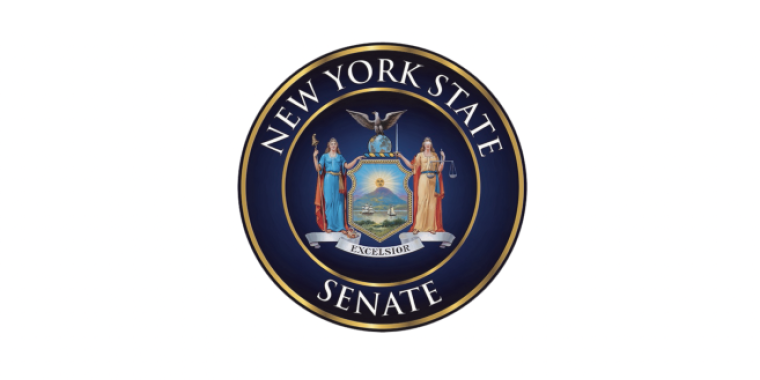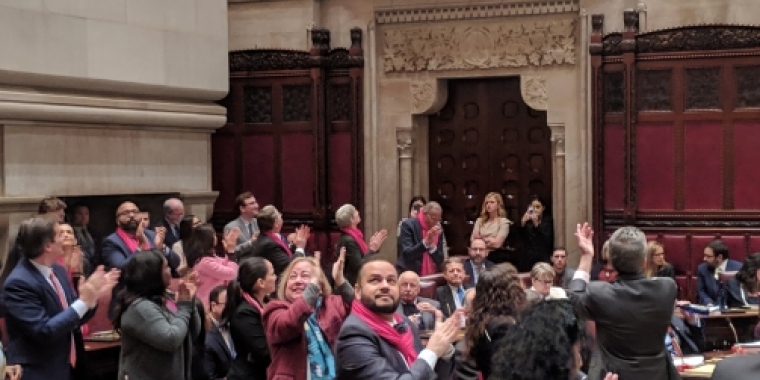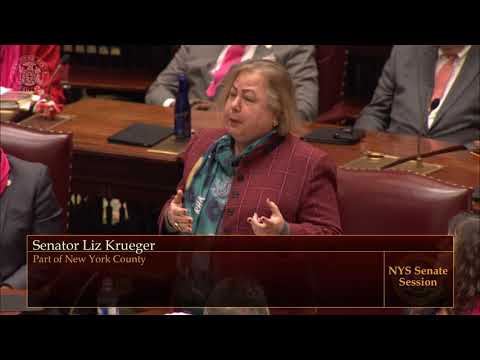
Senators Urge State Board Of Elections To Fix Draft Ballot Language For Equal Rights Amendment
July 23, 2024
-
ISSUE:
- Equal Rights Amendment

Albany – Today, 32 State Senators released a letter sent to the State Board of Elections in response to proposed ballot language for Proposition One, the Equal Rights Amendment. In the letter, which can be viewed below or by clicking here, the Senators argue that the Board's proposed language does not follow the "plain language" legislation that became law last year. They go on to say that, in addition to lowering the reading comprehension level required to easily understand the ballot measure, the Board must also include the words "abortion" and "LGBT" so that voters will know the practical impact of their decision. Senator Liz Krueger and Assembly Member Rebecca Seawright, sponsors of the Equal Rights Amendment legislation, also recently wrote an op-ed in amNY urging the board to change their draft language.
"I believe that the Board's draft language violates both the spirit and the letter of the plain language law, and needs to be rewritten so that voters can fully understand the practical impact of their decision," said Senator Krueger. "In addition to improving comprehensibility by using everyday language, such as 'LGBT,' the ballot must include the word 'abortion.' The Legislature passed the ERA with the express purpose of protecting abortion; that will be its impact, and that must be clear to voters when they read the ballot."
As per regulation, in advance of Election Day, the New York State Board of Elections has issued draft ballot text and is accepting public comments through Friday, July 26, 2024.
The draft ballot language is as follows:
Adds Certain Protections to the State Bill of Rights
Adds anti-discrimination provisions to State Constitution. Covers ethnicity, national origin, age, disability, and sex, including sexual orientation, gender identity and pregnancy. Also covers reproductive healthcare and autonomy.
A “YES” vote puts these protections against discrimination in the New York State Constitution.
A “NO” vote leaves these protections out of the State Constitution.
What sets this ballot proposal apart is that it is the first ballot measure to be voted on since the enactment of the plain language law in 2023, which stipulates that ballot proposals shall be written in plain language – scoring no higher than an 8 on the Automated Readability Index (ARI) when possible.
As NYSBOE acknowledges, the draft ballot proposal has an ARI score of 14, which is above the statutory goal of 8.
###
July 22, 2024
New York State Board of Elections
40 North Pearl Street
Suite 5
Albany, NY 12207
Dear Members of the Board:
We, the undersigned members of the State Senate, write to submit public comments regarding the draft ballot language of Proposal Number One, an Amendment, which will be the first ballot measure voted on since the “plain language” ballot readability legislation was enacted in 2023. Based on the requirements of Election Law 4-108, we strongly urge the BOE Commissioner to revise the draft ballot language to clearly and accurately describe the practical impact of the amendment and achieve an Automated Readability Index (ARI) score of 8 or below.
When New York voters are asked to support or reject essential ballot measures that propose changes to New York laws, policies, and practices that will impact their lives, it is critical that they are able to understand the proposals before them. Yet, previous ballot measures have required voters to have college-level reading comprehension ability. Last year, New York joined twenty-one other states in addressing this voting access issue by enacting legislation to ensure ballot measure readability. Proposal Number One on this year’s ballot will be the first time this new law is applied, and it is critical to establish solid precedent.
In addition to setting a strong precedent, we stress the importance of getting the language right because this constitutional amendment impacts the lives of all New Yorkers. The Equal Rights Amendment protects New Yorkers from discrimination based on ethnicity, national origin, age, disability, and sex, including sexual orientation, gender identity, gender expression, pregnancy, pregnancy outcomes, and reproductive healthcare and autonomy. When many of these rights are under attack in the United States, voters must understand what this ballot measure means before casting their vote. There is a genuine concern that voters will otherwise abstain from voting or vote based on a misunderstanding of the ballot measure.
The New York State Board of Elections (BOE) proposes the following text of Proposal Number One, which has an Automated Readability Index (ARI) score of 14:
Adds Certain Protections to the State Bill of Rights
Adds anti-discrimination provisions to State Constitution. Covers ethnicity, national origin, age, disability, and sex, including sexual orientation, gender identity and pregnancy. Also covers reproductive healthcare and autonomy.
A “YES” vote puts these protections against discrimination in the New York State Constitution.
A “NO” vote leaves these protections out of the State Constitution.
Upon reviewing the draft ballot proposal and considering the context for this constitutional amendment, we respectfully submit the following concerns about the draft language:
The Draft Ballot Measure Language May Be Confusing or Misunderstood
The BOE has acknowledged that the ARI score of 14 “represents the New York State Board of Elections’ best efforts to present the details” of the proposed amendment, and has stated that, “…enacting legislation for the Proposition includes a list of protected classes, all of which would be added to the Constitution if approved. These terms must all be included in the Proposition language to ensure voters are fully informed of the proposed additions.”
We appreciate that BOE has included all of the protected classes in the ballot measure text; however, Election Law 4-108 does not stipulate that the exact language of the policy change must be incorporated in the ballot language. In fact, the law states that the change in policy must be written in plain, “easily comprehended” language.
We assert that the meaning of certain legislative language will not be apparent to voters, many of whom will see the ballot measure for the first time when they vote. Terms such as “anti-discrimination provisions” and “reproductive autonomy” are examples of language that may be confusing or misunderstood. We strongly urge the BOE to provide plain language alternatives to legislative terminology, which will help to achieve a readability score that is closer to 8.
The Final Ballot Measure Language Must Include The Words “Abortion” and “LGBT”
Over the years, New York State has positioned itself as a leader in the fight for abortion rights and access to abortion care, as well as LGBT rights. When the U.S. Supreme Court overturned Roe v. Wade, eliminating the federal right to abortion, the NYS Legislature passed the Equal Rights Amendment with the explicit purpose of bolstering protection of abortion rights at the state level, as well as establishing protection from discrimination for other classes of NYS residents. At a time when abortion rights are in jeopardy, voters must understand Proposal Number One will protect abortion rights in the state constitution. This critical point may be lost, however, if the word “abortion” is not included in the ballot language.
Regarding LGBT protections, the draft ballot measure states that the amendment adds protections against discrimination based on a person’s sex, including “sexual orientation” and “gender identity.” These terms are not commonly used in everyday conversation and are likely to be misunderstood. This can be addressed by using the term “LGBT” instead.
Proposal Number One: Alternate Ballot Language
Based on the concerns mentioned above, we submit the following ballot language for you to consider, which has an ARI score of 8. This proposed language incorporates more commonly used terms to describe the protected classes and eliminates potentially confusing legislative terminology. Of particular importance, the proposed language includes the terms “abortion” and “LGBT”.
Adds Certain Protections to the State Bill of Rights
Changes the State Constitution to protect more people from unfair treatment. Covers where they come from, their age, disability, sex, LGBT identity, pregnancy, and abortion choices.
A “YES” vote adds these protections to the State Constitution.
A “NO” vote leaves them out.
Thank you for the opportunity to provide comments and for your attention to this critical matter.
Sincerely,
Liz Krueger
Andrea Stewart-Cousins
Jamaal Bailey
Jabari Brisport
Samra Brouk
Iwen Chu
Leroy Comrie
Jeremy Cooney
Nathalia Fernandez
Michael Gianaris
Kristen Gonzalez
Andrew Gounardes
Pete Harckham
Michele Hinchey
Brad Hoylman-Sigal
Robert Jackson
John Liu
John Mannion
Rachel May
Shelley Mayer
Kevin Parker
Roxanne Persaud
Jessica Ramos
Gustavo Rivera
Julia Salazar
James Sanders
Luis Sepulveda
José Serrano
James Skoufis
Toby Ann Stavisky
Kevin Thomas
Leah Webb



